#spanish anarchist
Text
every time someone uses anarchic as a synonym of chaotic the ghost of Henry Kissinger gets a little stronger
#spanish anarchism#anarchocommunism#anarcho communism#anarchism#anarchist#anarcho#anarcho collectivism#anarchopunk#anarquismo#epic gay anarchism swag style#egass#anarchy#eco anarchism#pls stop#its so fucking annoying istg
84 notes
·
View notes
Photo
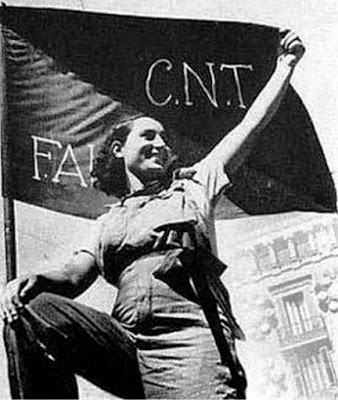
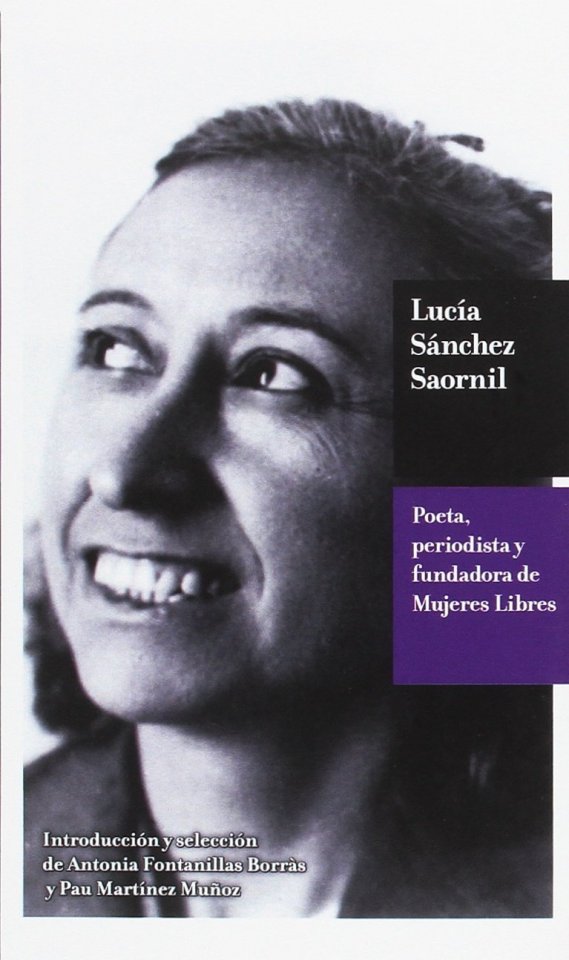
Lucía Sánchez Saornil (deceased)
Gender: Female
Sexuality: Lesbian
DOB: 13 December 1895
RIP: 2 June 1970
Ethnicity: White - Spanish
Occupation: Poet, anarchist, feminist, activist
#Lucía Sánchez Saornil#Lucia Sanchez Saornil#lgbt history#lesbian history#lgbtq#female#lesbian#1895#rip#historical#white#spanish#poet#anarchist#feminist#activist#popular#popular post
212 notes
·
View notes
Text
a course I would legitimately love to design for my university and teach is “ *American* literature in translation” where we read only stuff published in or about the US in other languages
#Blume lempel obviously but also minari and works in Spanish and Italian language anarchist poetry#And American w#Norwegian and German language stuff. I’d have to do a deep dive
17 notes
·
View notes
Text
youtube
⭕ The famous speech of anarchist Juan Garcia Oliver on 20 November 1937 at Montjuic Cemetery, in Barcelona, in homage to Buenaventura Durruti, who died on 20 November 1936.
(English Subs).
Who was Durruti, as summarized by Joe King in theanarchistlibraryorg:
To reduce to a few hundred words the life story of an almost mythic figure is not an easy task. It can be said, without fear of exaggeration, that Buenventura Durruti symbolised in his person the courageous struggle of workers and peasants in that country, and more specifically symbolises the spirit of Spanish anarchism.
He was born the son of a railway worker on July 14th 1896 in Leon, a city in central Spain. Aged 14 he leaves school to become a trainee mechanic in the railway yard. Like his father, he joins the socialist UGT union. He takes an active part in the strike of August 1917 when the government overturned an agreement between the union and the employers. This soon became a general strike throughout the area. The government brought in the army and within three days the strikers had been crushed. The troops behaved with extreme brutality, killing 70 and wounding 500 workers. 2,000 strikers were jailed.
Durruti managed to escape to France, where he came into contact with exiled anarchists, whose influence led to him joining the anarchist CNT union upon his return in January 1919. He joins the fight against dictatorial employers in the Asturian mines and is arrested for the first time in March 1919; he escapes and over the next decade and a half he throws himself into activity for the CNT and for the anarchist movement.
These years see him involved in several strikes and being forced into exile. Unwittingly the Spanish government ‘exported’ rebellion, as Durruti and his close friend Francisco Ascaso happily joined the struggle for freedom wherever they ended up, in both Europe and Latin America.
The Spanish monarchy fell in 1931 and Durruti moved to Barcelona; accompanied by his French companion Emilienne, pregnant with their daughter Colette. He joined the Iberian Anarchist Federation (FAI), a specifically anarchist organization, and together with other militants they form the ‘Nosotros’ group. These were members within the CNT of a radical tendency that harboured no illusions with respect to the recently proclaimed Republic, maintaining that the moment was ripe for continued progress towards a social revolution.
With the electoral victory by the liberal/reformist Popular Front in February 1936, Left and Right were on a collision course, initiated very rapidly by Franco’s military rebellion on July 19th 1936. The CNT and the FAI confronted the army with courage, organization and mass mobilizations.
They triumphed in much of Spain despite the fascist superiority in weapons and resources. The anarchist contribution was decisive in resisting the fascists throughout the country and in Catalonia defeated the rebels singlehandedly, Durruti being one of the boldest fighters in this battle. It was here that Francisco Ascaso lost his life.
On July 24th, from Barcelona where the anarchist goal of workers’ control, direct democracy and liberty was starting to be a reality, Durruti left with an armed column towards Zaragossa, occupied by the fascists. Through hard battles this workers’ militia, without officers or other military trappings, advanced and saved the Aragon front against much better equipped regular troops.
Parallel to this, the anarchist forces supported a social transformation which meant the establishment of agricultural collectives in Aragon, upsetting the authoritarians of the Communist and Socialist parties, according to whom the war could not be won with the revolution going on. War or no war these would-be rulers would never have liked a real workers’ democracy.
After the liberation of Aragon, Durruti was interviewed by Pierre van Passen of the Toronto ‘Star’. “For us,” said Durruti, “it is a matter of crushing fascism once and for all. Yes, and in spite of the government. No government in the world fights fascism to the death.
“When the bourgeoisie see power slipping from its grasp, it has recourse to fascism to maintain itself. The Liberal government of Spain could have rendered the fascist elements powerless long ago. Instead it compromised and dallied. Even now at the moment there are men in this government who want to go easy on the rebels.”
And here Durruti laughed. “You can never tell, you know, the present government might yet need these rebellious forces to crush the workers’ movement...
“We know what we want. To us it means nothing that there is a Soviet Union somewhere in the world, for the sake of whose peace and tranquillity the workers of Germany and China were sacrificed to fascist barbarians by Stalin. We want revolution here in Spain, right now, not maybe after the next European war.
“We are giving Hitler and Mussolini far more worry with our revolution than the whole Red Army of Russia. We are setting an example to the German and Italian working class how to deal with fascism.”
But, interjected van Passen, even if you win “You will be sitting on a pile of ruins.” Durruti answered “We have always lived in slums and holes in the wall. We will know how to accommodate ourselves for a while. For, you must not forget, we also know how to build. It is we the workers who built these palaces and cities, here in Spain and in America, and everywhere.
“We, the workers, can build others to take their place, and better ones! We are not in the least afraid of ruins. We are going to inherit the earth, there is not the slightest doubt about that. The bourgeoisie might blast and ruin its own world before it leaves the stage of history. We carry a new world, here, in our hearts. That world is growing this minute”.
Durruti embodied the feelings and goals of the workers in arms, being a peculiar “chief” whose main privilege was to fight in the first line and whose only rank was the esteem his equals had for him. His courageous life came to an end in November of that same year. On the 15th Durruti arrived with a force of 1,800 men to reinforce the defence of Madrid, where they went immediately to the toughest section and on the 19th he was struck by a bullet. He died at dawn on the 20th, being buried two days later at Montjuich’s cemetery in Barcelona, accompanied by 500,000 people carrying the red & black flags of anarchism. It was the largest funeral cortege ever seen in that city.
Here was a man who fought for his union and anarchist ideals; who never sought any special privileges for himself, who acted as much as he read or thought, who loved, dreamed and was determined to leave this world a better place than when he entered it.
#durruti#garcia oliver#spain#spanish#anarchist#anarchism#anarchists#antifa#antifascist#antifascism#antifascists#spanish revolution#spanish civil war#history#Youtube
100 notes
·
View notes
Text
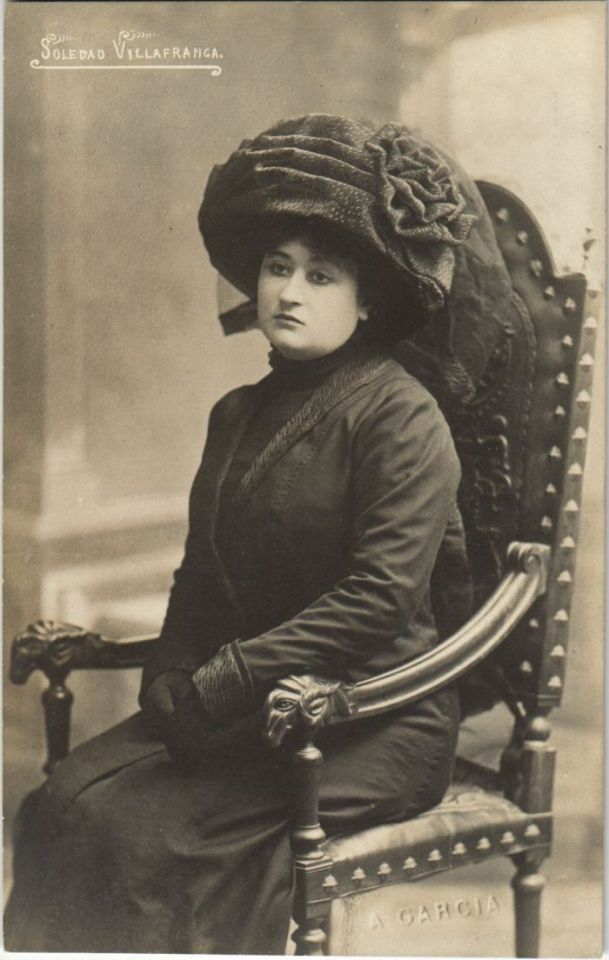
Spanish anarchist and activist Soledad Villafranca on a vintage postcard
#vintage#photography#activist#postkarte#carte postale#postal#spanish#briefkaart#postcard#old#anarchist#soledad villafranca#villafranca#photo#ansichtskarte#sepia#postkaart#ephemera#tarjeta#soledad#historic
21 notes
·
View notes
Text
youtube
Barcelona's Antifascist Revolution Unveiled in Rare Anarchist Durruti Funeral Video from 1936 - He died on this day
Rare newsreel footage from José Buenaventura Durruti Dumange's (14 July 1896 – 20 November 1936) funeral in Barcelona, attended by more than half a million anarchists.
He died on 20 November 1936, at the age of 40, in a makeshift operating theatre set up in what was formerly the Ritz Hotel. The bullet was lodged in the heart; the diagnosis recorded was "death caused by pleural haemorrhage". The doctors wrote a report in which the path of the bullet and the character of the wound was recorded but not the calibre of the bullet, since no autopsy was performed to remove it.
His driver's gave the following testimonial about the events that lead to his death: "We passed a little group of hotels which are at the bottom of this avenue [Avenida de la Reina Victoria] and we turned towards the right. Arriving at the big street, we saw a group of militiamen coming towards us. Durruti thought it was some young men who were leaving the front. This area was completely destroyed by the bullets coming from the Clinical Hospital, which had been taken during these days by the Moors and which dominated all the environs. Durruti had me stop the car which I parked in the angle of one of those little hotels as a precaution. Durruti got out of the auto and went towards the militiamen. He asked them where they were going. As they didn't know what to say, he ordered them to return to the front. The militiamen obeyed and Durruti returned towards the car. The rain of bullets became stronger. From the vast red heap of the clinical hospital, the Moors and the Guardia Civil were shooting furiously. Reaching the door of the machine, Durruti collapsed, a bullet through his chest."
--- It is we the workers who built these palaces and cities, here in Spain and in America and everywhere. We, the workers. We can build others to take their place. And better ones! We are not in the least afraid of ruins. We are going to inherit the earth. There is not the slightest doubt about that. The bourgeoisie might blast and ruin its own world before it leaves the stage of history. We carry a new world here, in our hearts. That world is growing in this minute.
— Buenaventura Durruti -
#Durruti#anarchist#anarchism#anarchists#antifa#antifascist#antifascism#antifascists#spain#spanish#espana#funeral#video#spanish revolution#spanish civil war#Youtube
14 notes
·
View notes
Text
.
#still not over the insane george orwell post that got reblogged onto my dash yesterday#i unfollowed the person who reblogged it#because either A) theyre a tankie or B) their criticial thinking skills are sub-fucking-zero#like 1) the OP of that post was just copying Hakims awful video on Orwell#2) to read animal farm and come out of it with the interpretation that Orwell was saying that the animals and hence the proletariat in the#USSR were just innately unintelligent shows a reading comprehension so bad its not even like piss poor. its piss impoverished#3) if a post is like ''also look X said Y Bad Thing'' without providing any of the context as to where that quote comes from theyre likely#being deliberately mishonest. it is easy to take someone out if context to make it look like they were saying something they werent which is#exactly what the OP of that post was doing. they took one sentence of Orwells writing on the nazis and Hitler to make it look like Orwell#thought Hitler was a swell guy when actually Orwells writing was about the dangers of charismatic tyrants like Hitler and their rhetoric#the entire thing was about how Hitler was able to amass such power and popularity and use that to his advantage#not every despot is so easy to pick out as dangerous or so easy to detest. hitler was hardly the first charismatic tyrant in history#OP also conveniently left out the fact that like the next sentence is orwell being like yeah no i would fucking kill this man which wow#thats a glaring omission. imagine if people decided to look up what OP was refetencing to verify irs veracity#4) OP does not mention that Orwell fought in La Guerra Civil alongside communists and socialists and anarchists etc.#he fought against the nationalists. he took a bullet to the neck during the fight. he was very much against francisco franco and his fascist#regime who were allied with Hitler and the Nazis#mentioning orwells participation in the spanish civil war really undercuts any of those arguments#5) you know who was actually allied with Hitler and Nazi Germany? STALIN#at the beginning of WWII the soviet union and nazi germany were in alliance. stalin and hitler did not have fundamental ideological#differences. if hitler had not betrayed stalin the soviet union would not have joined the allied powers#your uwu anti-fascist communist idol joseph fucking stalin was joseph fucking stalin. he was a fascist dictator whose actions deliberately#caused the deaths of hundreds of thousands of people. he like vladimir lenin before him did not care for the ideals of marx#marxism leninism is a meaningless political ideology#the soviet union was not a communist paradise. neither stalin not lenin cared about the proletariat#i said this in my tag ramble yesterday but if you want to see a leader who actually followed marxist ideals go look up thomas sankara#im just rambling in the tags today to get out the lingering frustration i have
6 notes
·
View notes
Text

Pity the revolution that devours itself in order to obtain victory. Pity the revolution that waits for a final triumph to put its ideals into practice. In spite of all the difficulties and deceptions, the Spanish revolution had the good fortune to come to full fruition. The revolutionary work of the collectives will be an indelible mark in time and space. The rest will pass into history like a bad dream.
The Anarchists in the Spanish Revolution, José Peirats
{pictured: anarchists militants of the CNT-FAI in the Spanish Revolution, colourised photo}
6 notes
·
View notes
Text
anarchists are some of the most stupid people on the planet
5 notes
·
View notes
Text
y'all i poured my heart and soul into making this list of contemporary anarchist sites in barcelona. all of the info on the list is publicly available on the internet, i just put it all into one place. i'm sharing here in the hopes that it might be of use to any of you :')
4 notes
·
View notes
Text
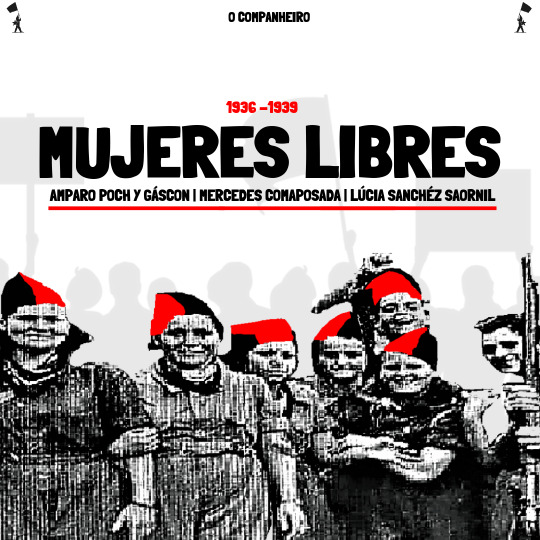

Revista Mujeres Libres - Revolução Espanhola - 1936 - Mercedes Comaposada, Lúcia Sanchez Saornil e Amparo Poch y Gáscon.
#anarquismo#anarquista#jcompanheiro#colagem digital#artedigital#desenhodigital#revolucion española#revoluçãoespanhola#spanish revolution#mujereslibres#mujeres libres#cnt#revolução#revolución#revolution#spanish#buenaventura durruti#anarchism#anarchist
4 notes
·
View notes
Text

#antifa#antifa history#history#161#1312#antifascist#spain#spanish civil war#spanish anarchists#antiauthoritarian#antinazi#jewish antizionism#antizionist#antifascismo#antifaschistische aktion#ausgov#politas#auspol#tasgov#taspol#australia#fuck neoliberals#neoliberal capitalism#anthony albanese#albanese government#antiracism#how to be an antiracist#anti capitalism#eat the rich#eat the fucking rich
0 notes
Text

1 note
·
View note
Text
Juliet-Stuart Poyntz. Free will? Abduction? Or murder?
When a private citizen suddenly disappears it could be for a number of reasons. Debts, trauma, fear or perhaps a simple desire to start over. If they can’t become somebody else, they can at least be somewhere else. Of course, there could be other reason. Perhaps they didn’t vanish by their own choosing, but somebody else’s. The still-unsolved vanishing of American Juliet-Stuart Poyntz is a…
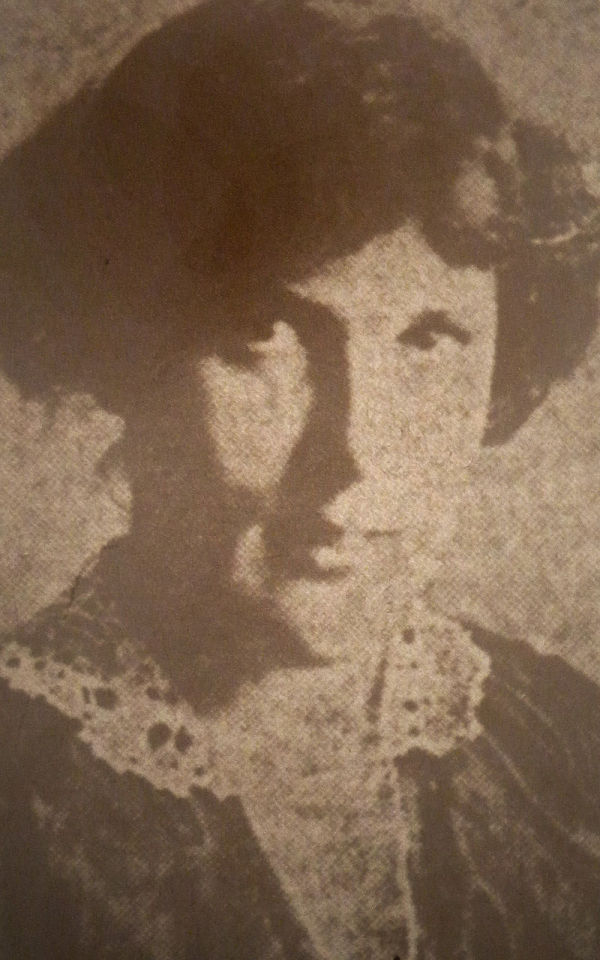
View On WordPress
#Anarchist#assassin#assassinated#assassination#Benjamin Gitlow#Carlo Tresca#Central Park#crime and punishment#Espionage#George Mink#History#Il Martello#Juliet Stuart Poyntz#murder#New York#NKVD#Soviet Union#Spanish Civil War#Stalin#treason#true crime#Westchester
0 notes
Text

Spanish anarchist and activist Soledad Villafranca on a vintage postcard
#briefkaart#carte postale#anarchist#villafranca#postal#historic#ephemera#activist#photo#postkarte#photography#sepia#spanish#vintage#soledad villafranca#ansichtskarte#tarjeta#old#postcard#soledad#postkaart
8 notes
·
View notes
Text
youtube
⭕ The famous speech of anarchist Juan Garcia Oliver on 20 November 1937 at Montjuic Cemetery, in Barcelona, in homage to Buenaventura Durruti, who died on 20 November 1936.
(English Subs).
Who was Durruti, as summarized by Joe King in theanarchistlibraryorg:
To reduce to a few hundred words the life story of an almost mythic figure is not an easy task. It can be said, without fear of exaggeration, that Buenventura Durruti symbolised in his person the courageous struggle of workers and peasants in that country, and more specifically symbolises the spirit of Spanish anarchism.
He was born the son of a railway worker on July 14th 1896 in Leon, a city in central Spain. Aged 14 he leaves school to become a trainee mechanic in the railway yard. Like his father, he joins the socialist UGT union. He takes an active part in the strike of August 1917 when the government overturned an agreement between the union and the employers. This soon became a general strike throughout the area. The government brought in the army and within three days the strikers had been crushed. The troops behaved with extreme brutality, killing 70 and wounding 500 workers. 2,000 strikers were jailed.
Durruti managed to escape to France, where he came into contact with exiled anarchists, whose influence led to him joining the anarchist CNT union upon his return in January 1919. He joins the fight against dictatorial employers in the Asturian mines and is arrested for the first time in March 1919; he escapes and over the next decade and a half he throws himself into activity for the CNT and for the anarchist movement.
These years see him involved in several strikes and being forced into exile. Unwittingly the Spanish government ‘exported’ rebellion, as Durruti and his close friend Francisco Ascaso happily joined the struggle for freedom wherever they ended up, in both Europe and Latin America.
The Spanish monarchy fell in 1931 and Durruti moved to Barcelona; accompanied by his French companion Emilienne, pregnant with their daughter Colette. He joined the Iberian Anarchist Federation (FAI), a specifically anarchist organization, and together with other militants they form the ‘Nosotros’ group. These were members within the CNT of a radical tendency that harboured no illusions with respect to the recently proclaimed Republic, maintaining that the moment was ripe for continued progress towards a social revolution.
With the electoral victory by the liberal/reformist Popular Front in February 1936, Left and Right were on a collision course, initiated very rapidly by Franco’s military rebellion on July 19th 1936. The CNT and the FAI confronted the army with courage, organization and mass mobilizations.
They triumphed in much of Spain despite the fascist superiority in weapons and resources. The anarchist contribution was decisive in resisting the fascists throughout the country and in Catalonia defeated the rebels singlehandedly, Durruti being one of the boldest fighters in this battle. It was here that Francisco Ascaso lost his life.
On July 24th, from Barcelona where the anarchist goal of workers’ control, direct democracy and liberty was starting to be a reality, Durruti left with an armed column towards Zaragossa, occupied by the fascists. Through hard battles this workers’ militia, without officers or other military trappings, advanced and saved the Aragon front against much better equipped regular troops.
Parallel to this, the anarchist forces supported a social transformation which meant the establishment of agricultural collectives in Aragon, upsetting the authoritarians of the Communist and Socialist parties, according to whom the war could not be won with the revolution going on. War or no war these would-be rulers would never have liked a real workers’ democracy.
After the liberation of Aragon, Durruti was interviewed by Pierre van Passen of the Toronto ‘Star’. “For us,” said Durruti, “it is a matter of crushing fascism once and for all. Yes, and in spite of the government. No government in the world fights fascism to the death.
“When the bourgeoisie see power slipping from its grasp, it has recourse to fascism to maintain itself. The Liberal government of Spain could have rendered the fascist elements powerless long ago. Instead it compromised and dallied. Even now at the moment there are men in this government who want to go easy on the rebels.”
And here Durruti laughed. “You can never tell, you know, the present government might yet need these rebellious forces to crush the workers’ movement...
“We know what we want. To us it means nothing that there is a Soviet Union somewhere in the world, for the sake of whose peace and tranquillity the workers of Germany and China were sacrificed to fascist barbarians by Stalin. We want revolution here in Spain, right now, not maybe after the next European war.
“We are giving Hitler and Mussolini far more worry with our revolution than the whole Red Army of Russia. We are setting an example to the German and Italian working class how to deal with fascism.”
But, interjected van Passen, even if you win “You will be sitting on a pile of ruins.” Durruti answered “We have always lived in slums and holes in the wall. We will know how to accommodate ourselves for a while. For, you must not forget, we also know how to build. It is we the workers who built these palaces and cities, here in Spain and in America, and everywhere.
“We, the workers, can build others to take their place, and better ones! We are not in the least afraid of ruins. We are going to inherit the earth, there is not the slightest doubt about that. The bourgeoisie might blast and ruin its own world before it leaves the stage of history. We carry a new world, here, in our hearts. That world is growing this minute”.
Durruti embodied the feelings and goals of the workers in arms, being a peculiar “chief” whose main privilege was to fight in the first line and whose only rank was the esteem his equals had for him. His courageous life came to an end in November of that same year. On the 15th Durruti arrived with a force of 1,800 men to reinforce the defence of Madrid, where they went immediately to the toughest section and on the 19th he was struck by a bullet. He died at dawn on the 20th, being buried two days later at Montjuich’s cemetery in Barcelona, accompanied by 500,000 people carrying the red & black flags of anarchism. It was the largest funeral cortege ever seen in that city.
Here was a man who fought for his union and anarchist ideals; who never sought any special privileges for himself, who acted as much as he read or thought, who loved, dreamed and was determined to leave this world a better place than when he entered it.
#anarchist#anarchism#durruti#garcia oliver#spain#espana#antifascist#antifascism#antifascists#antifa#spanish#anarchists#history#Youtube
7 notes
·
View notes